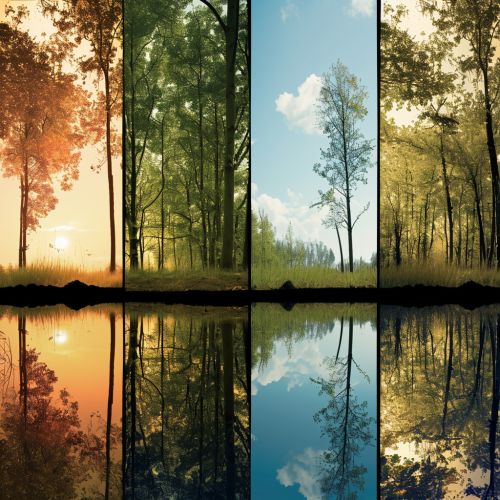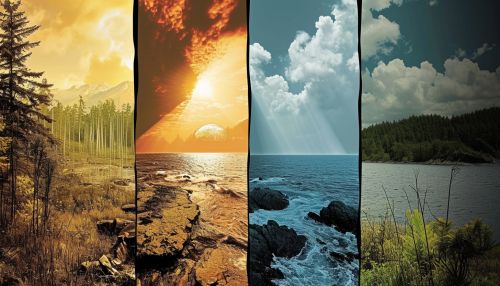Representative Concentration Pathways
Introduction
Representative Concentration Pathways (RCPs) are four greenhouse gas concentration (not emissions) trajectories adopted by the IPCC for its fifth Assessment Report (AR5) in 2014. They are named after a possible range of radiative forcing values in the year 2100 relative to pre-industrial values (+2.6, +4.5, +6.0, +8.5 W/m^2, respectively).


Development and Purpose
RCPs were developed to analyze the impact of different climate outcomes and associated impacts on the earth's systems. They were created by different research teams around the world and are used to understand potential changes in the climate system, as well as to evaluate potential policy responses. The pathways are used in models that simulate the earth's climate system to project future changes in temperature, precipitation, and other climate variables.
Pathways
RCP 2.6
RCP 2.6 assumes that global annual greenhouse gas emissions (measured in CO2-equivalents) peak between 2010-2020, with emissions declining substantially thereafter. Emissions in RCP 2.6 peak at around 490 GtCO2/yr, then decline to around 350 GtCO2/yr by 2100. In terms of radiative forcing, RCP 2.6 is a "peak-and-decline" scenario; after peaking at around 3.1 W/m^2 before 2100, forcing declines to 2.6 W/m^2 by 2100.
RCP 4.5
RCP 4.5 is an intermediate scenario. It assumes that emissions peak around 2040, then decline. In 2100, emissions are projected to be around 630 GtCO2/yr. The radiative forcing in RCP 4.5 stabilizes after 2100 without overshoot, at approximately 4.5 W/m^2.
RCP 6
RCP 6 is another intermediate scenario, where emissions peak around 2080, then decline. In 2100, emissions are projected to be around 850 GtCO2/yr. The radiative forcing in RCP 6 also stabilizes after 2100 without overshoot, at 6 W/m^2.
RCP 8.5
RCP 8.5 is the highest of the four RCPs and thus the one associated with the most severe climate change impacts. Emissions continue to rise throughout the 21st century. In 2100, emissions are projected to be around 1310 GtCO2/yr. Radiative forcing in RCP 8.5 reaches 8.5 W/m^2 by 2100 and continues to rise for some years after 2100.
Use in Climate Modeling
The RCPs are used as input for climate models, including both physical climate models and IAMs, to project future climate change under the various scenarios. The RCPs are used to produce spatially explicit climate change projections which can be used for climate change impact assessments and adaptation studies.
Criticisms and Limitations
While the RCPs provide a useful tool for exploring potential climate futures, they have been subject to criticism. Some critics argue that the RCPs are based on a number of assumptions about socio-economic factors that are highly uncertain, such as future developments in technology, economic growth, population growth, and political decisions about climate policy. Others have argued that the RCPs do not adequately represent the full range of possible emissions scenarios, particularly with regard to negative emissions technologies.
